
|   |

|   |
Srijan Chhanda presents Guru Smaranam 2024 - Dr.Nita Vidyarthi e-mail: nitavidyarthi@gmail.com Photos courtesy: Rajib Bhattacharya July 3, 2024 Guru Smaranam celebrated at the Satyajit Ray Auditorium, Rabindranath Tagore Centre, ICCR Kolkata, was a stately tribute and heartfelt homage to Guru Kelucharan Mohapatra and his legacy - the blaze from which several lamps of the world of Odissi draw their energy and brightness. It was to honour his memory on his 20th death anniversary that Srijan Chhanda, Kolkata, paid him respect through captivating dance, organised and fully supervised by the reputed Kolkata based senior Odissi dance exponent, choreographer and teacher Rajib Bhattacharya. The evening was no run-of-the mill Odissi dance programme. It was a reunion of sorts of dancers, connoisseurs and dance lovers of the city, replete with memories locked in the hearts of two disciples of the legendary Guru - his son Ratikant Mohapatra and Sharmila Biswas. Deep appreciation and affectionate comments by them were showered for Rajib for taking the initiative in organising this programme which facilitated in inspiring and propagating the richness, the distinction and excellence of the gharana to the present generation and the future too and brought to the fore his reverence for his Gurus and the dedication to the dance form. Rajib began his dance training under Sharmila Biswas and later honed his skills under Guru Kelucharan Mohapatra. At present he is under the tutelage of Guru Ratikant Mohapatra. His Odissi dance training institution Srijan Chhanda established in 1998 has grown from strength to strength into a premiere institution in the city nurturing young talents and preserving his Guruji's legacy. The evening was an exploration of reverence, progress, continuity, innovation and presentation of the traditional Odissi of the Guru Kelucharan gharana through solo performances by the Guru's worthy son Ratikant Mohapatra, a top brass dancer, ace pakhawaj player and choreographer and also renowned disciple Guru Sharmila Biswas and devoted follower Rajib. It began with a serene 'Pushpanjali', the offering of flowers to the photograph of the maestro placed on one corner of the stage with the chanting of the Guru Pranam Stotram "Akkhanda Mandalaakaaram Vyaptam Yena Characharam". 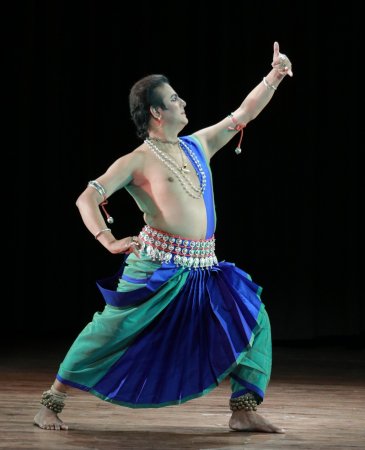 Rajib Bhattacharya Rajib took the stage for a "Rama Stuti" in taal Chaturashra Ektali and Jyoti set to the sombre raag Malkauns. The Rama stotram from Strotraratnavali with music composition by Himangshu Shekhar Swain, mardala accompaniment by Soumyaranjan Panda, sitar by Jibon Prakash Das, flute by Prof. Jawahar Mishra and violin by Amit Kumar Das, saw the dancer aglow with devotional fervour in this delightful combination of superlative lyrics and soothing music. Felicity of expression, elegance in movements, flair for interpretation and the dancer's divine grace soaked in sanchari bhava, were a pleasure to watch and were the hallmark of Rajib's rendition in praise of Lord Rama. 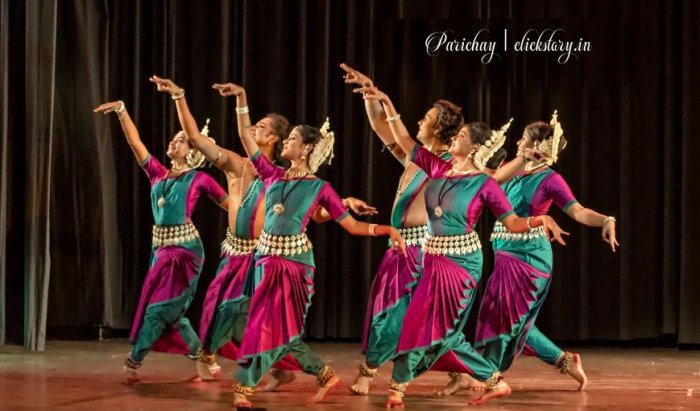 Students of Srijan Chhanda Margabehag Pallavi, the next presentation in Talamalika, saw the students of Srijan Chhanda reflect their solid training, good teamwork and grip on rhythm in this pure dance item. Used for the first time in Odissi dance, Rajib Bhattacharya's choreography and the synchronized dancing of the group made the stage space eloquent with simplicity of artistic lines, perfect bhramaris, padabedas and subjective ideas of elaborate technical aspects of classical Odissi, set to the sweet, mellifluous Odissi raga. Performers Kamalika Bose, Debolina Dutta, Sruti Dhar, Ayanika Roy, Surajit Biswas and Soumen Kundu made their teacher Rajib proud with the accomplished support of music composer Himangshu Shekhar Swain and musicians Ekalavya Muduli (mardala), Jibon Prakash Das (sitar), Prof. Jawahar Mishra (flute)and Amit Kumar Das (violin). Rajib with his choreography, fellow musicians and dancers helped to get the "bhavmurthy" of this raga and let the audience get through the essence of it (and the dancing) with great appreciation. 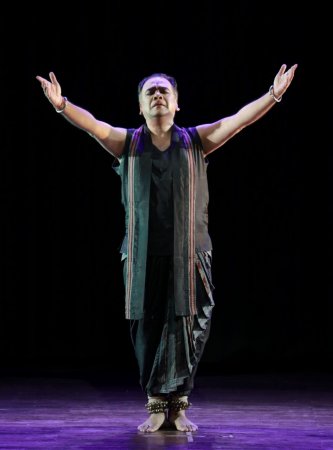 Ratikant Mohapatra Apart from what he inherits from his illustrious parents and delves into his legacy, Guru Ratikant Mohapatra has in abundance something indefinable, perfect in content and technique, which is a blend of learning, sensibility, creativity and expressiveness be it in his choreographic visualisation or in performance. So the presentation of Navarasa through his execution of 'Ram Vandana' set to Sant Tulisidas' famous Ram bhajan "Ramachandra Kripalu Bhajamana" with music composition by Pradip Das, bore testimony to his quantitative as well as qualitative creative output of a delicacy of expression. While journeying through the major incidents of Ramayana in an elaborate treatment, the expressional resources stood out in its entire intensity, offering the presentation in Ragamalika, taal Jyoti and Adi, a pictorial effect. With unbelievable fluidity and his charisma, he made the piece a form of Shastric classical elegance in the sequences of 'Sitaharan', with theatrical vigour in 'Ravanavadh' and with atmanivedana, accepting half-eaten berries from Sabari, while infusing a devotional flavour whenever required. In entirety, the interpretation of the various scenes in the Ramayana as met with in the composition of Goswami Tulsidas, was a wonderful coalescence of the musical and lyrical nuances in the rewarding presentation. 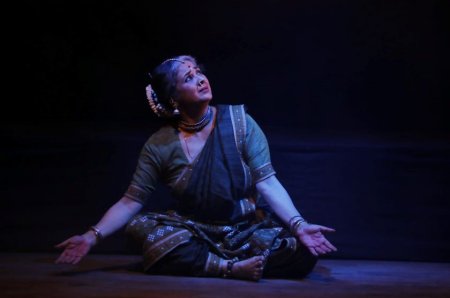 Sharmila Biswas Inspired by the Maharis of Odisha, Guru Sharmila Biswas presented 'Vilasini' as her personal tribute to all dancers, especially to Shashimani and Parashmani Mahari. They had shared with her "generously and contributed to her growth as a student of Odissi dance". Sharmila Biswas infuses an incisive and skilful art of storytelling exploration in her dance often with folk elements of Western Odisha. Vilasini by the consummate dancer was a shringar based piece and a reflection of the art of storytelling through a dream sequence of a Mahari, where the past echoes in her memory. Presented through a scenery of dreams she visualises those incidents and moments of her life which made her desirable - for which she bedecked herself, dressed herself and was in waiting. Details of shringar like "Mukha Dekhili" (viewing myself in the mirror) and dressing the hair by making a bun with Jharakathi accompanying the beautiful song "Juda Bandhili Jharakathi Nei" from Danai Dasa Malika were some of the moments to luxuriate in. Every posture and elaboration of the already familiar steps of Odissi had no rhythmic tension, the footwork mostly gentle, facile and soft with clear emotionally tinged voices and songs. Absorbed in the inexplicable emotional content of her rendition, the weaving together of spoken, textual, musical, physical, biting theatrical language to a superb and evocative ekapatra abhinaya and dancing, Sharmila went through a gamut of expressions to captivate the over capacity audience. Her final dramatic, coquettish exit with a questioning gesture to the audience made for a wondrous experience. The evening concluded with a vibrant, joyous, group performance 'Ananda Moksha' by two girls and three boys of Odissi Vision Movement, the institution of Sharmila Biswas. Based on the "Ghanta Mardala" tradition and verses on Shiva-Parvati, the processional dance was vibrant with claps, playing of brass cymbals, manjira as in the ratha-jatra festivals and songs like "Jai Matangini Jai" for everyone to rejoice. Ramahari Das' voice and Dhaneswar Swain's mardala accompaniment made for a highly entertaining finale. Neeladyuti Choudhury, a senior disciple of Srijan Chhanda, compered the programme efficiently. In his concluding remarks, Rajib Bhattacharya expressed his gratitude to his disciples and emphasized on the profound influence of Guru Kelucharan Mohapatra on his artistic journey. With the resonating chant of "Jai Jagannath", the event concluded leaving behind a legacy of cultural enrichment and artistic excellence. 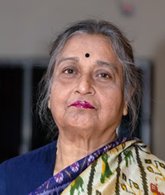 Dr. Nita Vidyarthi is a veteran critic of performing arts and writes on dance, music and theatre in leading publications. |